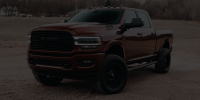At Beaus Autoeverything® we take all the necessary steps and procedures to make sure you are taken care of and back on the road.
Tires & Wheels

Tires & Wheel Services
We do more than just repair leaky tires. Our technicians are trained to help you maximize the life of your tires and ensure every drive is a smooth one.
Maintain the right tire pressure
For your safety, always refer to the vehicle manufacturer’s placard (usually located on the driver’s side door pillar) for the correct tire inflation pressure.
Many modern vehicles are equipped with a Tire Pressure Monitoring System (TPMS). This is an electronic system designed to inform a driver of an unsafe drop in tire pressure. TPMS systems warn drivers via a gauge, a pictogram display, or by a symbol located on the dashboard.
Filling your tires with nitrogen ensures a more stable and consistent tire pressure. Compared to oxygen, nitrogen molecules are larger and less susceptible to changes in temperature.
Wheel vibration
Wheel vibration can damage your steering and suspension components, leading to premature tire wear or costly mechanical failures. Beau’s Autoeveryting has advanced equipment that can pinpoint problems with infrared laser technology and diagnostic capabilities.
Wheel vibration can be caused by:
- An incorrectly balanced wheel assembly
- A bent rim
- A radial run-out
- A lateral run-out
- A build-up of mud or snow inside the rim
- Improper inflation
- A mechanical failure such as a defective wheel bearing or axle shaft.
Certain materials present in these components, like the nylon used to cushion ball joints and tie rods, will experience extreme pressure when a wheel is out-of-balance. An experienced technician will do a visual inspection first to determine if any wheels are loose. If all the wheels are tight, then a road test will help pinpoint the cause of the vibration. Our technicians will balance your wheels and ensure that the rim is cleaned and free of any build-up that could harm your wheel’s vibration.
Tire balancing
Tire balance is the action of correcting the balance of the tire and wheel assembly. The tire and wheels are placed onto a wheel balancing machine to determine if any weights (stick on, clip on, or press on) are required to rebalance the assembly. However, these types of wheel balancers are limited to what kind of diagnosis they can provide to eliminate vibrations. If a wheel assembly has excessive lateral run-out (side to side movement while rotating), adding weight will not correct the balance but may mask the concern. When spinning the wheel assembly on the balancing machine, an experienced installer can detect both lateral and radial run-out and recommend further inspection.
Wobbly wheels
In some cases, a wheel assembly (tire and wheel) may contribute to the vibration condition. “Lateral run-out” – the wheel’s side-to-side movement – can cause the wheel assembly to move back and forth, disrupting the natural rotation of the assembly. This uncommon occurrence can be perceived as a vibration by the driver. “Radial run-out” is a condition where the wheel assembly moves in an eccentric pattern around its spin axis. Picture an egg trying to roll down the street—the up and down motion creates vibration and excessive movement.
Flat spots and deformed tires
The tread surface of the tire may experience a deformity caused by wheel lock up to flat spotting from parking overnight. Advancements in tire balancing technology can now depict the difference in wheel lock up flat spotting or overnight parking flat spotting. No other equipment in the marketplace can perform these same functions. As an added precaution to eliminate vibration concerns, some equipment manufacturers recommend taking the vehicle for a “warm up” drive before doing the actual wheel balance.
Rotating your tires
Rotating your tires is an essential part of the regular maintenance to your vehicle. The purpose of rotating the tires is to achieve a more uniform wear for all of your tires, saving you money in the long run. Refer to your owner’s manual for the recommended interval to rotate the tires. If this is not available, vehicle manufacturers recommend that you use the same interval as changing the oil and filter (every 7,500 miles or 12,000 km, or 6 months—whichever occurs first) to rotate your tires. The more you pay attention to tire rotation and tire inflation, the longer the tires will last.
START A CONVERSATION
| Location | 280 Talbot Street N, Essex, ON, N8M 2E1 |
|---|---|
| Call Us | 519.776.6481 |
| Text Us | 226.271.2051 |
| Hours | Mon-Fri: 8:00 AM - 5:00 PM Sat: 8:00AM - 12:00PM Sun: Closed |







